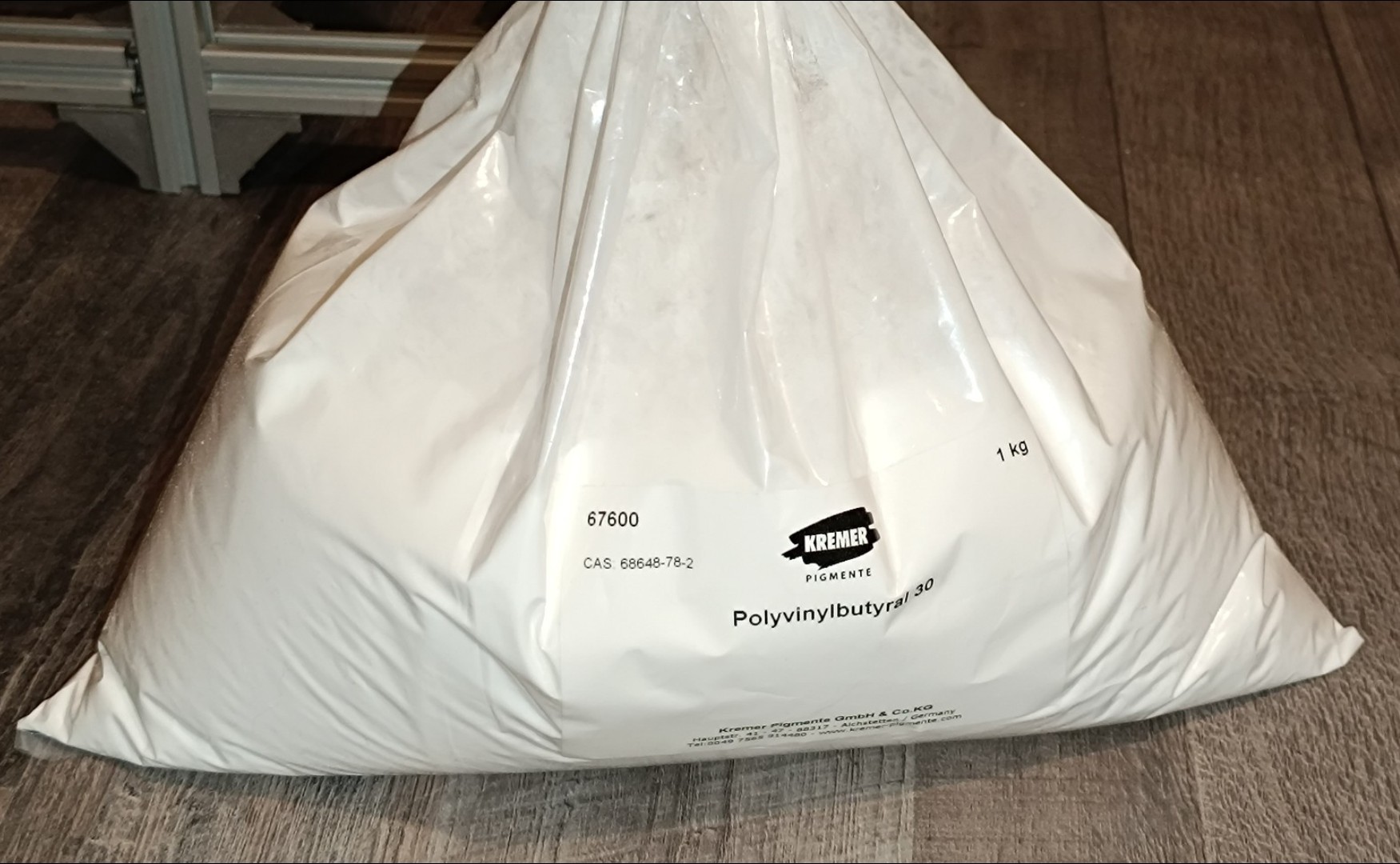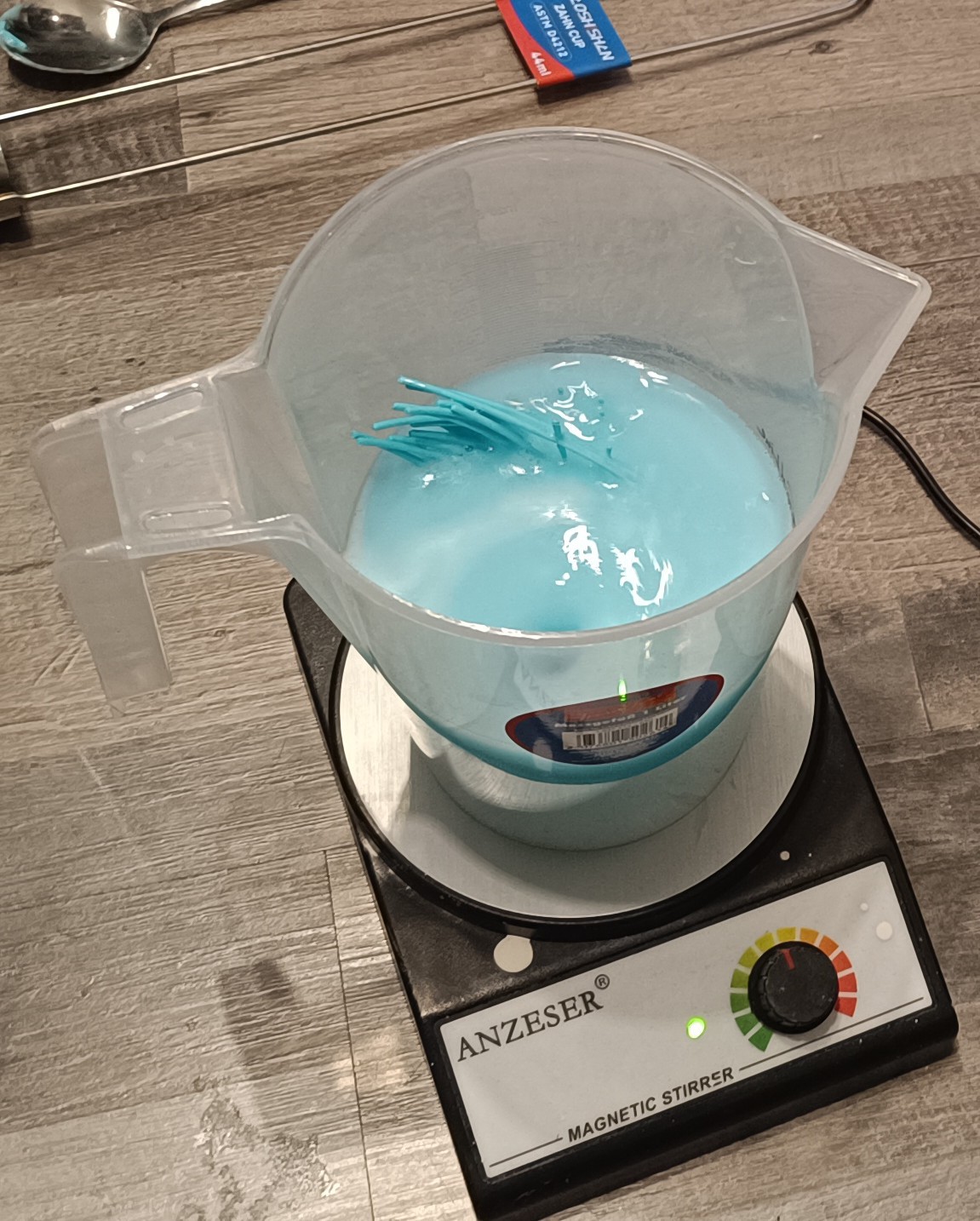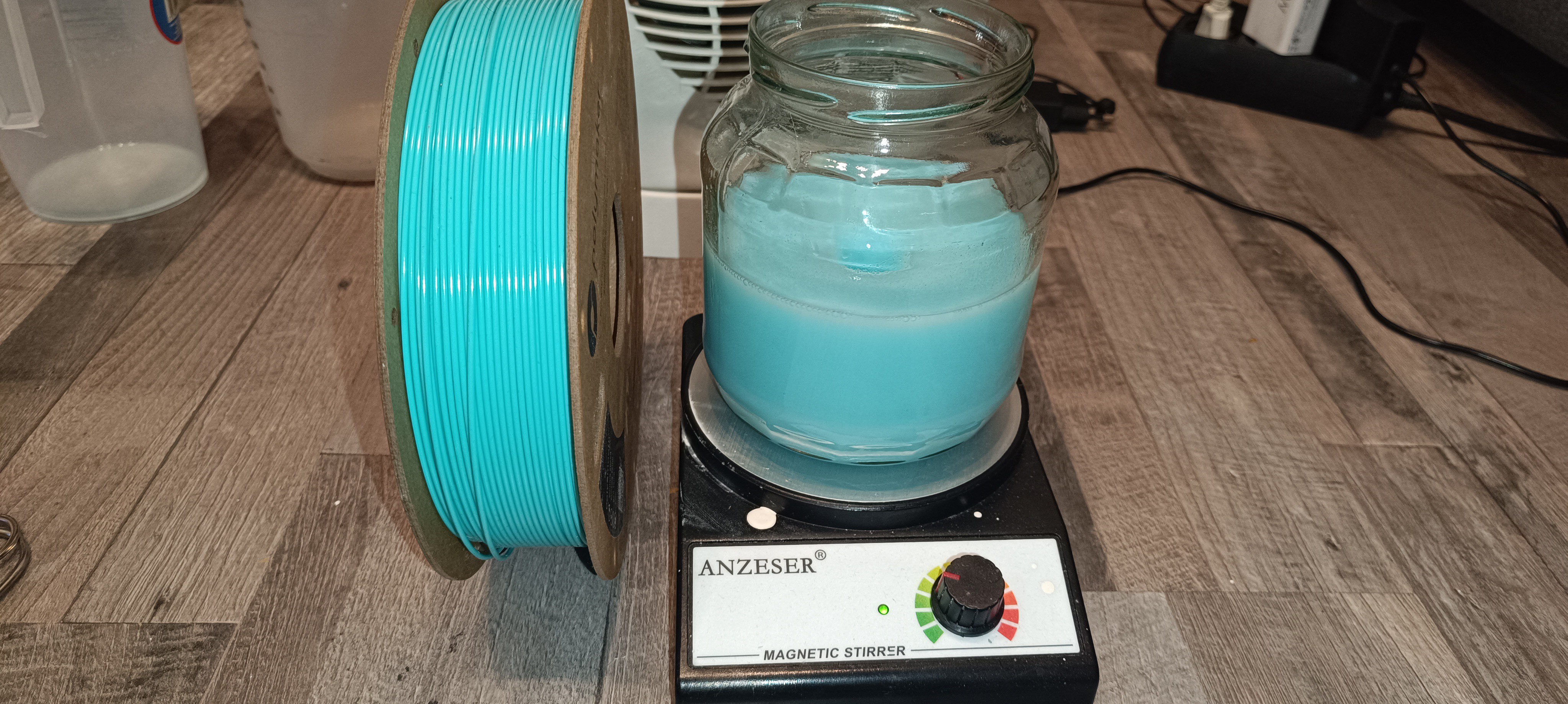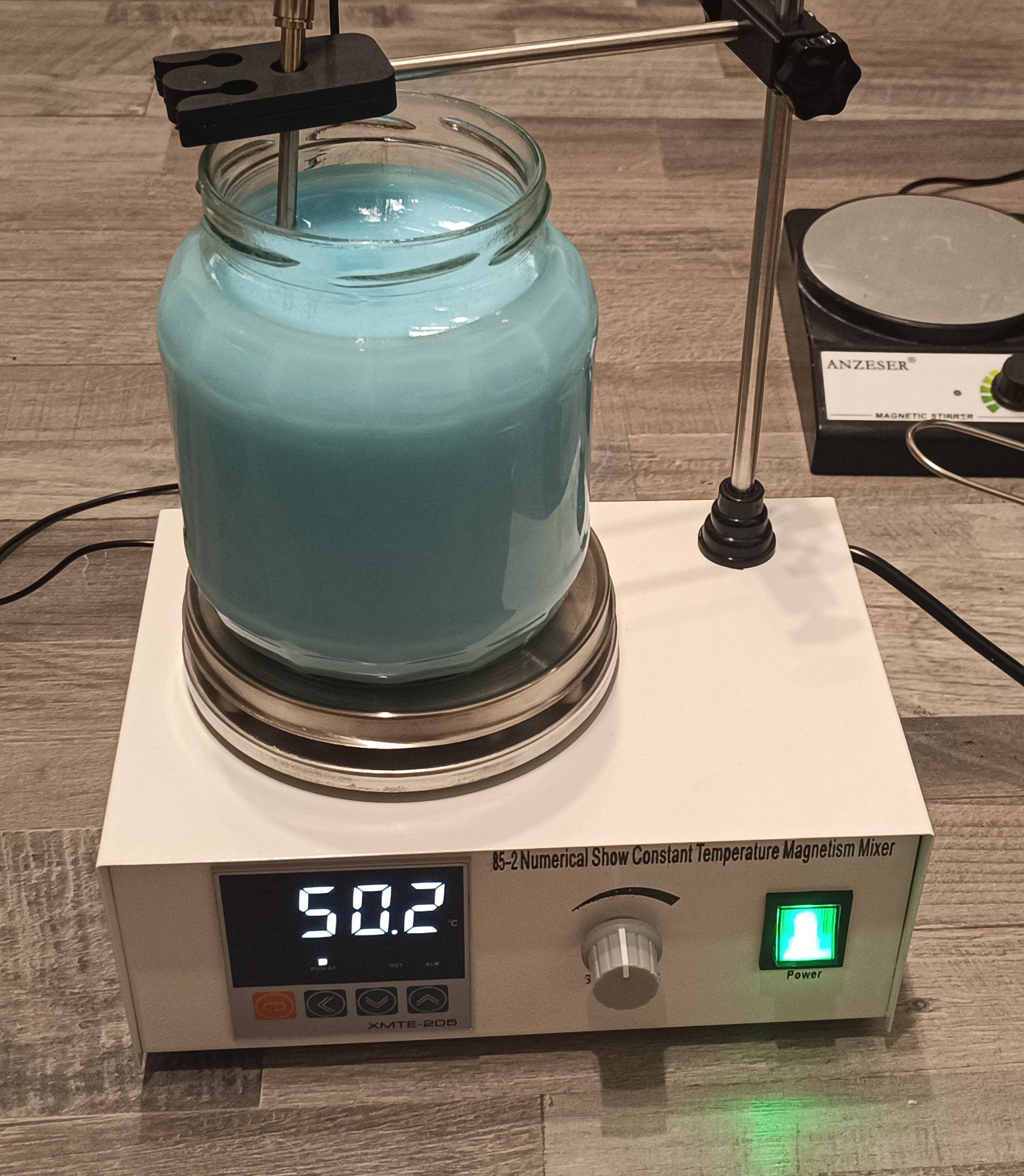For the project, I'm currently using an ink made out of ethanol and polyvinyl butyral (PVB) with an additive for increasing its conductivity (sodium acetate).
Until now, I used PVB powder for it and while it can be used for ink without problems, I'm still a bit concerned about using it, because it is not a commonly used item, so it can be a little hard to find a shop that sells it.

Because of that, I tried to find something else and saw that there is PVB-based 3D printing filament available almost everywhere you can buy filament.
So, I ordered a spool of PVB filament to test out if it dissolves in ethanol while increasing its viscosity.

For the test, I wrapped some filament around my hand and cut the windings together to get a few equal-sized pieces that could stand upright inside the cup like spaghetti noodles.
This way the filament dissolved better than when it was cut into shorter pieces or when PVB in powder form was used.
The shorter pieces stuck to the wall or bottom of the cup, and the powder formed clumps that only came in contact with the ethanol on the surface and stayed dry inside so it took a long time until they dissolved whitout constantly breaking them apart with a spoon.
At the same time, the longer pieces came in contact with the ethanol over the whole length and dissolved in about an hour without further ado.




By heating the ethanol before adding the filament the time it takes to dissolve can be reduced even further.

After the filament was completely dissolved, I checked the viscosity of the mix with the Zahn 1 cup and saw that its viscosity had increased from around 26s of pure ethanol to over 30s with the filament mixed in.
It also gave the mix a nice color so that no separate color pigments were needed to add color to the mix. It could still be, that on paper it would appear rather white than blue since the color is not as intense as the color of ink pigments.
One disadvantage of the filament compared to the powder could be its purity. While the powder is only made out of PVB, the filament may also contain other substances that could clog the nozzle or the filter, so it's important to keep an eye on that.
Overall, I think the PVB filament can be used to mix PVB ink and if it's easier to get than PVB powder it should be an suitable alternative.
 Dominik Meffert
Dominik Meffert
Discussions
Become a Hackaday.io Member
Create an account to leave a comment. Already have an account? Log In.